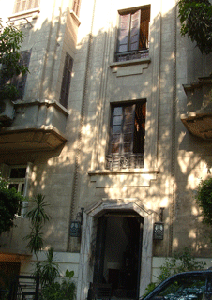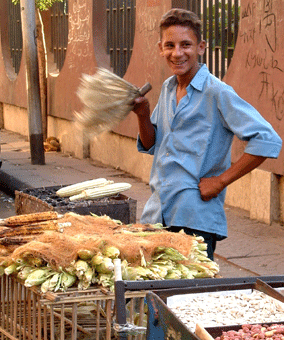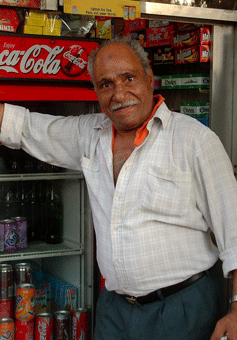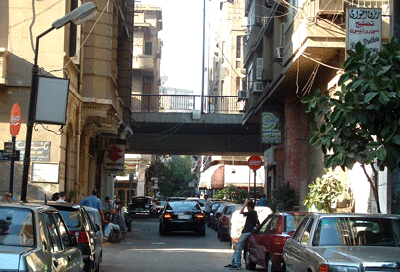
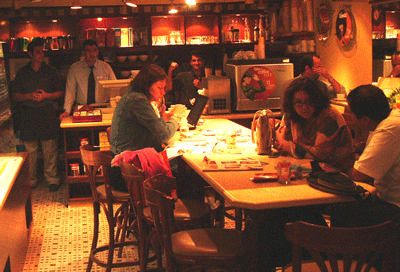
The project Iím working for is looking for a couple of full-time people for the next year. Not really me, but it got me thinking about what my life would be like if I actually lived in Cairo. Not, I hope, like the lives of most of the Americans I know here, living in leafy suburbia in Maíadi Ė hardly suburban by US standards, but definitely so by Cairene norms. Hanging around the American school with their children, going to the Maíadi Club to watch movies, shopping in the western stores in Maíadi, and going downtown only for excursions to the Egyptian Museum.
I think Iíd get a little apartment in Zamalek, which seems to be where childless foreigners live. Zamalek is a dense urban neighborhood at the north end of an island in the Nile. The streets donít go anywhere except around Zamalek, since itís an island. Except for Shariía Sitta Ashreen Iulio - 26 July Street Ė which crosses the river on both sides of the island and spans the island on a flyway. The street in the shade of the flyway is a mob scene all the time. Itís lined with shops, some conventional Cairene ones but others definitely catering to people like me - other foreigners, and Egyptians whose tastes run to things foreign.
Today I stopped in a coffee house on Sitta Ashreen, which as Iíd been warned had quite mediocre coffee, but clearly aspires to be an Egyptian version of something very western. Starbucks, perhaps, or PrÍt Š Manger, an English chain that sells sandwiches and fresh-squeezed orange juice. In some ways it succeeds. For one thing, thereís no smoking Ė itís amazing how much difference that makes. That means itís actually a pleasant place to hang out with my laptop, even if the coffee is lousy. Maybe half the people there were foreign, but they werenít tourists; this wasnít the cafť in some big western hotel. If I lived in Zamalek Iíd probably go there often, because I fit in. Not the Vanagon me, or the professional me, just the me that likes to hang out in coffee houses with my computer, no matter which role Iím playing.
Zamalek is vibrant enough for it to be fun to go outside. New York itís not Ė I loved being at my momís and going out in the middle of the night and finding life everywhere and everything open. But you know, maybe Zamalek is like that too. This is a nocturnal city, especially in the summer when itís too hot in the day to enjoy being in the streets. The shopping mall at my glitzy hotel hums until midnight or later, and even at one in the morning the corniche is packed with cars and lights. Especially on weekend evenings, when everyone is out and about instead of sleeping early for work the next day. So perhaps Zamalek is like that too. Certainly down on the corniche, where the restaurant boats are moored along the island, itís busy all the time.
Zamalek is an old part of Cairo. Not ancient, but 19th century. In the middle is a grand palace that was built to house the Empress Josephineís entourage for the celebration that marked the opening of the Suez Canal. Now its glory has faded Ė itís a Marriott Hotel, where Iíve stayed on many trips to Egypt. But even with two dreary hotel towers and a swimming pool, its gardens are still a gracious oasis in the middle of the city. And absolutely the place to see and be seen if youíre part of Cairoís young glitterati. At eleven on a Thursday night Ė the start of the weekend here Ė the cafť in the Marriott garden is packed with stylish Cairenes sipping coffee, flashing huge jewels, modeling chic fashions, stretching high heels from under sleek black robes, shining heavily mascaraed eyes through the narrow slits in full black headscarves that cover nose and mouth, lighting cigarettes as they chat on their cellphones.


